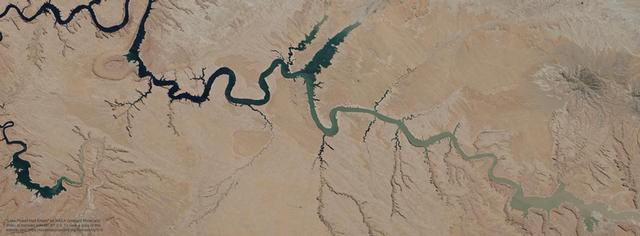Capabilities
The Cultural Heritage Monitoring Lab (CHML) is unique among heritage monitoring efforts in its range of capabilities.
Satellite Tasking: The CHML is the only lab of its kind with the ability to task satellites to capture high-resolution imagery of the earth's surface. Through its partnerships, the lab leverages its access to four orbiting satellites to capture panchromatic, multispectral, and other remotely sensed imagery. Our satellite imagery is captured at a resolution of 30-40 cm, allowing us to effectively identify threats and impacts.
Satellite Imagery Archive: Through its partnerships, the CHML leverages an archive of thousands of frequently captured, high-resolution satellite images to closely monitor threats, vulnerabilities, and changing conditions. When combined with its tasking abilities, this allows the CHML to rapidly identify destructive events to deliver timely information to heritage stakeholders.
Subject Matter Expert (SME) Reach Back: Through its public-private partnerships, the CHML uses satellite communications to work directly with personnel in a conflict or natural disaster area, when and where a subject matter expert in archaeology or cultural heritage is needed. This global capability allows the CHML team to communicate, track locations, produce critically-needed maps, and provide instruction to distant field sites in real-time from the lab.
Open-Source Monitoring: The CHML uses open-source monitoring techniques to identify leads and develop context for threats, vulnerabilities, and impacts to cultural heritage. Our analysts monitor a wide range of formal and informal media sources to support and focus our imagery efforts, and frame our findings within the appropriate legal, socio-cultural, or geopolitical context.
Stakeholder-Oriented: The CHML operates with an end game in mind, to rapidly identify threats and impacts to cultural heritage and deliver this information to response-oriented stakeholders. Our stakeholders include NGOs and government agencies in positions to best use our data and information products to safeguard cultural heritage.
Training: The CHML operates on a scholar-practitioner model to train undergraduates, graduate students, and heritage professionals in imagery analysis and open-source research. Our students learn how to monitor and identify emerging sources of open information, conduct satellite imagery analysis with respect to cultural heritage, and distill complex information into deliverables for stakeholders. In doing so, students are trained in real-world projects, where their research is delivered to NGOs and government agencies to inform responses, policy, and other actionable outcomes.
Research: The CHML is an active contributor to the Conflict Culture Resource Network (CCRN), a group of university and museum researchers conducting collaborative research to address the position of and impacts to cultural heritage in periods of violence and armed conflict. Parallel to these collaborative efforts, the CHML is engaged in independent methodological and conceptual research.

 Hours & Admissions
Hours & Admissions Directions
Directions

